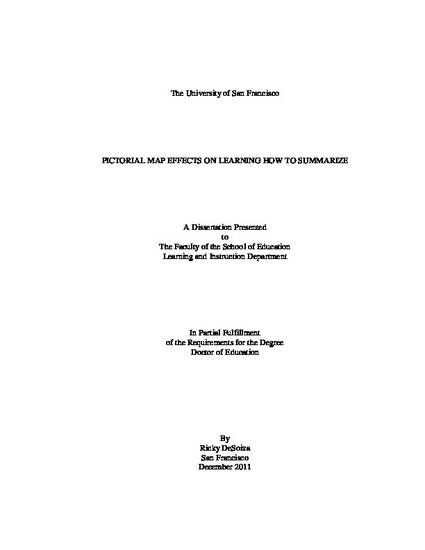
Inadvertent plagiarism among college students is caused by misunderstanding the rules and expectations about how to summarize source passages. Visual instruction in the form of a pictorial map is one way to address this problem and to teach students how to properly restate source text. Sixty-six college students from two universities participated in a quasi-experimental study in which an experimental group used a pictorial map instructional strategy and a control group used an underline/circle text instructional strategy to write summaries. The results showed that students in the pictorial map group wrote significantly better quality summaries for both high-interest politics passages and low-interest ballet passages. The findings were interpreted as support for a new hybrid visual strategy that uses journalism questions, images, linking lines, and partially blank labels to help students comprehend text and restate the main ideas in their own words and writing style. This study contributed to the learning and instruction literature by providing empirical evidence that a visual (pictorial map) tutorial was more effective than a verbal (underline/circle text) tutorial for summarizing paragraph-length passages.
Available at: http://works.bepress.com/richard_desoiza/1/